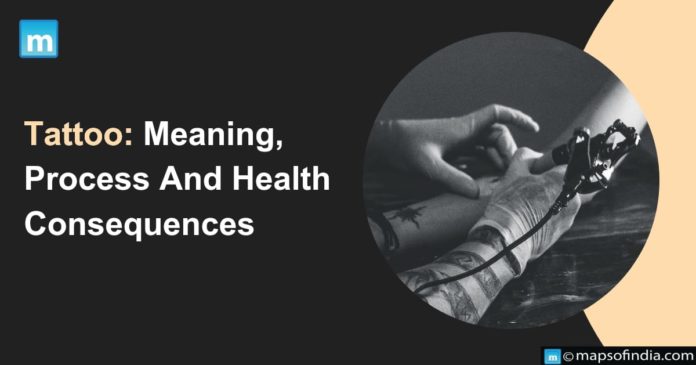What is a Tattoo?
A tattoo is a permanent mark or design applied to your skin through tiny pigment punctures. Typically, the tattoo artist employs a hand-held device that functions like a sewing machine, repeatedly puncturing the skin with one or more needles. In either case, you must discuss the tattoo’s size, color, and prospective placement with your tattoo artist and its design and style. The needles with each puncture insert tiny ink droplets.
What is the process of getting a tattoo?
The tattoo artist will use the lines from the stencil as a starting point. Following the tattooing of the linework, the artist will begin coloring and shaddling the design to add detail. The size and complexity of the tattoo design will determine the overall time required for getting a tattoo. Multiple visits to the tattoo parlor may be necessary for large designs. After the tattooing procedure is finished, the tattoo artist will clean the tattoo, use lotion to protect the tattoo design, and it can be covered with a bandage to protect it further. A better alternative is to give the skin 5 minutes to shed after the tattoo is finished.
The electrical tattoo machine is the most popular tattooing technique used around today. It uses a single needle or a collection of needles soldered to a bar connected to an oscillating unit to inject ink into the skin. Typically 80 to 150 times per second, the device rapidly and frequently inserts and removes needles from the skin. Typically, this current method is hygienic. The needles are single-use and are packed separately. The person getting the tattoo must wash their hands and the region they will be inking.
What are the health consequences of Tattooing?
Tattoos cause the skin to become perforated, which increases the risk of skin infections and other problems, such as:
- Allergic responses occur due to tattoos and are very common. The tattoo colors, especially red, green, yellow, and blue, can result in allergic skin reactions that manifest as itchy rashes at the tattoo site. This may happen even many years after getting the tattoo.
- Skin conditions are also a significant consequence after a tattoo. After getting a tattoo, skin infections are possible. These skin infections can cause issues. The skin can get inflammation and rashes.
- Different skin issues, such as around tattoo ink, a granuloma, or an area of inflammation, can occasionally develop. Keloids, elevated spots brought on by an excess of scar tissue, can also result from getting tattoos.
- Ailments caused by blood, such as bloodborne illnesses such as methicillin-resistant Staphylococcus aureus (MRSA), hepatitis B, and hepatitis C, might be developed if the tattooing equipment is contaminated with infected blood.
- Many problems with MRI occur due to tattoosRarely, MRI examinations with tattoos or permanent cosmetics may result in edema or burning in the affected areas. Tattoo pigments may cause problems with the image’s quality.
- Skin cancer, such as moles and other patches, occurs due to tattoos.




